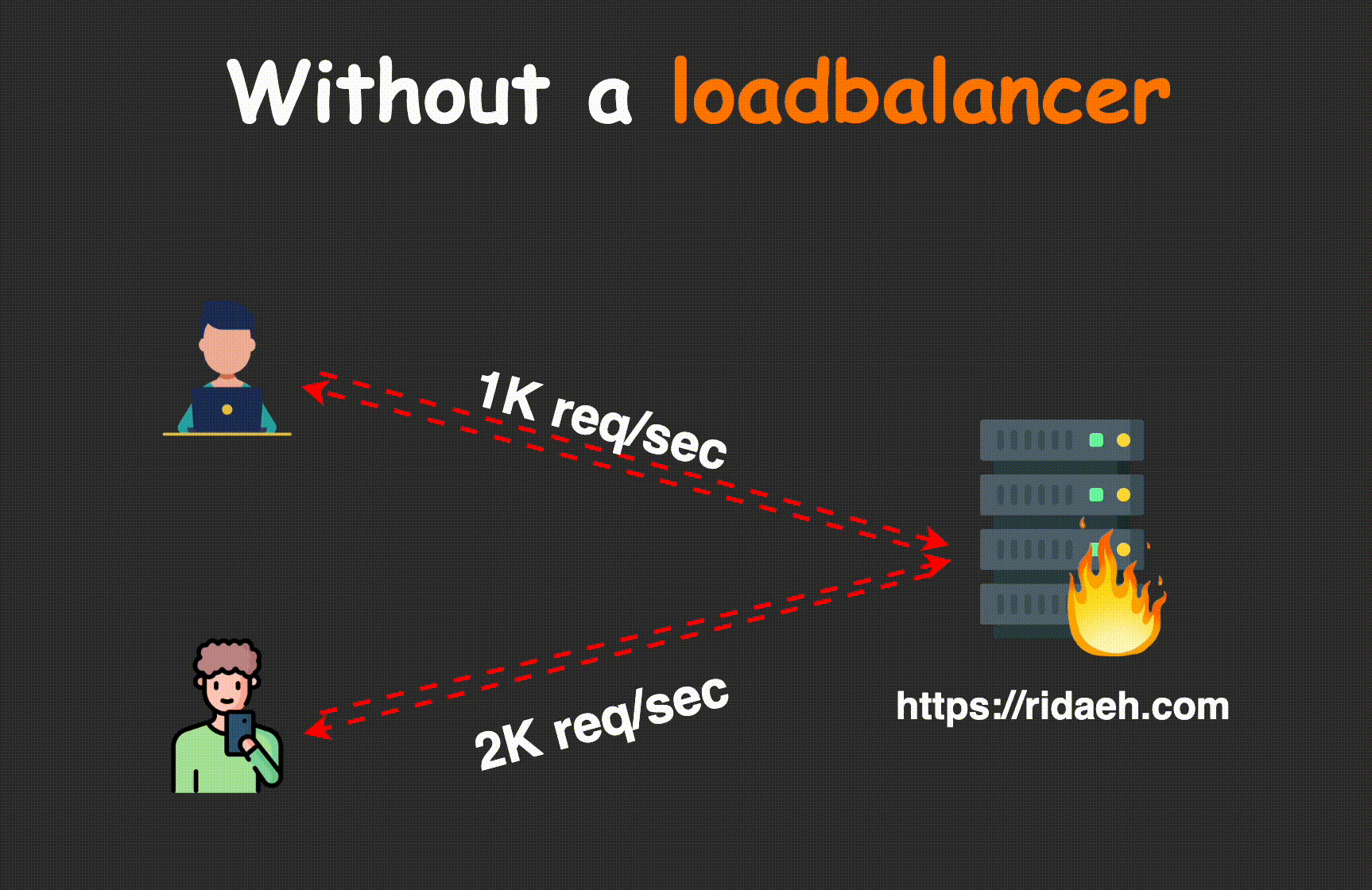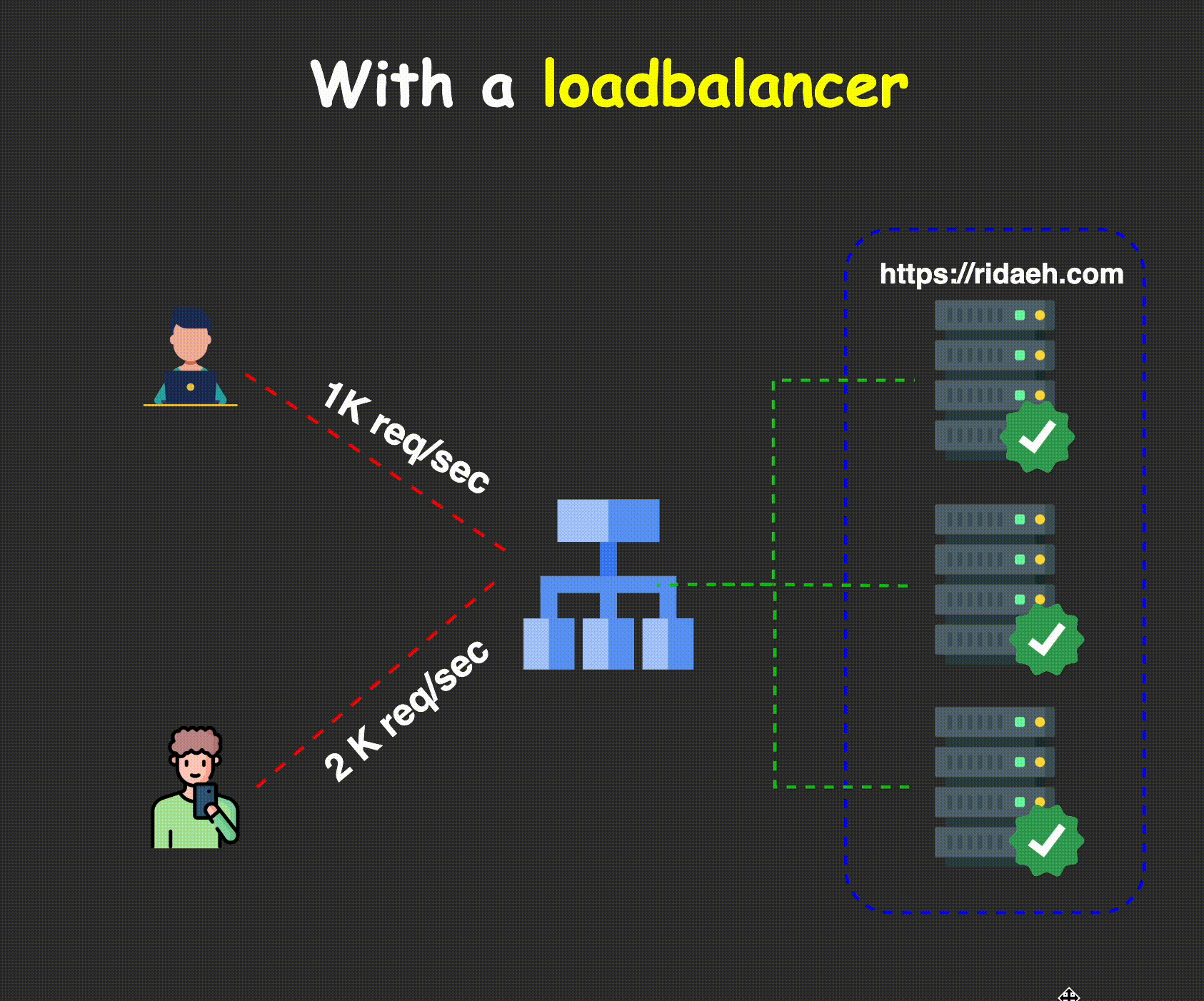Using a single server for you business, website or application is crucial. Under modern traffic, you server handles the requets just fine. However, once you website starts to receive high traffic, potentially thousands or even milions of cuncurrent requests, depending on your server resources,
So the question is how to ensure that you site won’t slowdown or in the worst case scenario, system failures. Ensuring optimal performance and fast response times in high-traffic situations.

What is a loadbalancer
Load balancer is a network device or service designed to effeciently distributes incoming traffic accross a group of servers , ensuring high availability,reliability, and optimal performance and resource utilization.

Why using a loadbalancer
Loadbalance offers a robust - Scalability: Flexibility to add or subtract servers as demande increase or decrease - Mitigating latency: Distributes client requests efficiently accross muliple servers. - High availability: Send requests only to online servers.
Loadbalancer and the cloud providers
Load balancers are a fundamental component in modern cloud and container-based infrastructures.
Azure, and Google Cloud Platform (GCP) offer robust load balancing solutions tailored to specific needs. AWS Load Balancer, for example, provides scalable and efficient distribution of traffic across various instances to optimize performance and avoid potential bottlenecks in the infrastructure. Similarly, Azure Load Balancer and GCP Load Balancer offer enhanced traffic management capabilities, catering to diverse networking scenarios.
Kubernetes, revered for its orchestration prowess, features its own built-in load balancing mechanism, readily facilitating the uniform distribution of traffic across the containerized applications, ensuring efficient resource utilization within the cluster.
Moreover, organizations often require internal load balancers to efficiently handle traffic within their internal network structure, optimizing the flow of data across different network segments, augmenting security, and bolstering connectivity.
Load balancing algorithms
Various load balancing algorithms are available, each with it is own benifts and use case, the choice of loadbalancing method depends on your needs:
- Round Robin — Requests are distributed across the group of servers sequentially.
- Least Connections — A new request is sent to the server with the fewest current connections to clients. The relative computing capacity of each server is factored into determining which one has the least connections.
- IP Hash — The IP address of the client is used to determine which server receives the request.
Load balancer types
Load balanacers are generally grouped into two categories: - Layer 4 or TCP Load balancer: act upon data fround in network and transport layer protocols - Layer 7 or Https load balancer, it acts upon application layer and distribute data based on data found in http requests such as http methods(GET,POST), url path, cookies…